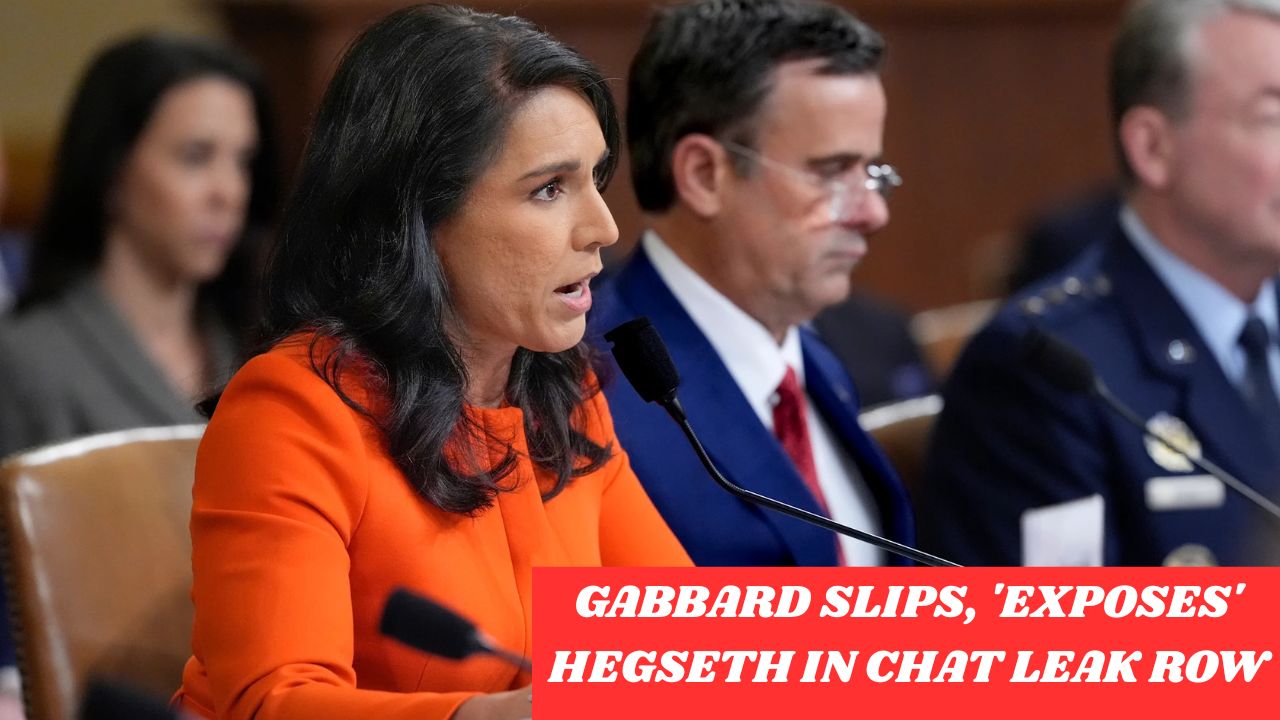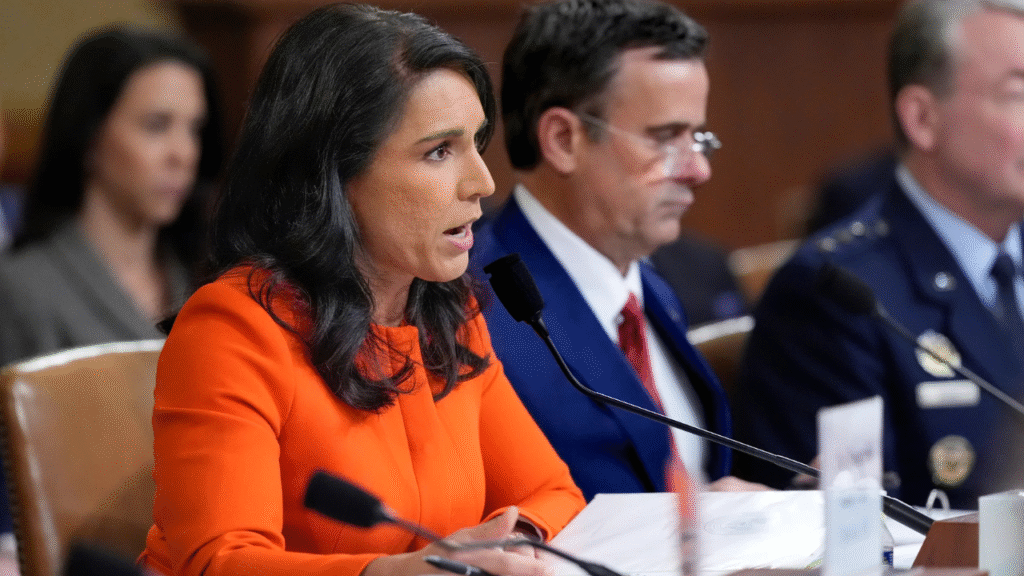
In a decisive shake-up of the intelligence community, Tulsi Gabbard fires intelligence officials accused of defying former President Donald Trump. This move follows the release of a controversial report debunking Trump-era narratives on Venezuela, igniting debates over the politicisation of intelligence.
The Backstory: Why Gabbard Fires Intelligence Officials Now
Tulsi Gabbard, currently serving as Director of National Intelligence (DNI), has dismissed two veteran intelligence figures—Mike Collins, former acting chair of the National Intelligence Council, and his deputy, Maria Langan-Riekhof. Both boasted over 25 years of intelligence service, yet found themselves ousted amid tensions over their stance on Trump-related policies.
Their firing came shortly after the publication of an unclassified intelligence report that directly contradicted the Trump administration’s justification for deporting Venezuelan immigrants. The report found no evidence of collaboration between Venezuela’s government and the Tren de Aragua gang, a key claim previously used to enact harsh immigration measures.
Political Undercurrents: Fallout as Gabbard Fires Intelligence Officials
Gabbard’s office stated that the firings were due to opposition against Trump but failed to provide detailed incidents or examples. “Gabbard’s office emphasised her dedication to partnering with President Trump to remove political agendas and halt the weaponisation of intelligence services. This bold action has sparked concern, especially among Democrats. Jim Himes, a top Democrat on the House Intelligence Committee, criticized the lack of transparency, warning that dismissals based on political alignment threaten the nonpartisan nature of intelligence work.

Reorganization in Motion: Gabbard Fires Intelligence Officials and Restructures Power
Simultaneously, Gabbard fires intelligence officials as part of a broader effort to consolidate control over intelligence operations. Critical functions like the President’s Daily Brief (PDB)—a key document summarizing top national security threats—are being shifted from CIA control to the ODNI headquarters.
Historically, the CIA played a significant role in preparing the PDB, providing staffing and resources. Gabbard’s restructuring will centralise this process under ODNI, giving her direct oversight of daily intelligence presented to the President.
Broader Intelligence Overhaul: The Gabbard Agenda
In addition to the recent firings, Gabbard is leading an extensive overhaul of the U.S. intelligence apparatus, aiming for deeper structural reforms. intelligence community. Under Trump’s guidance, her initiatives include:
- Eliminating diversity, equity, and inclusion programmes.
- Launching task forces to identify cost-cutting measures.
- Considering public disclosure of classified materials, including COVID-19 data.
- Enhancing investigations into intelligence leaks and political misuse of classified information.
Gabbard is responsible for aligning the efforts of 18 federal intelligence agencies, focusing on streamlining workflows and strengthening oversight

The Significance: Why Gabbard Firing Intelligence Officials Matters
While leadership transitions are common with new administrations, the abrupt dismissal of two seasoned intelligence officials has raised serious concerns. The National Intelligence Council, a body vital for integrating intelligence from multiple agencies, now faces leadership uncertainty.
Attempts to contact the dismissed officials for comment were unsuccessful. Meanwhile, the CIA declined to elaborate, citing confidentiality in personnel matters.



